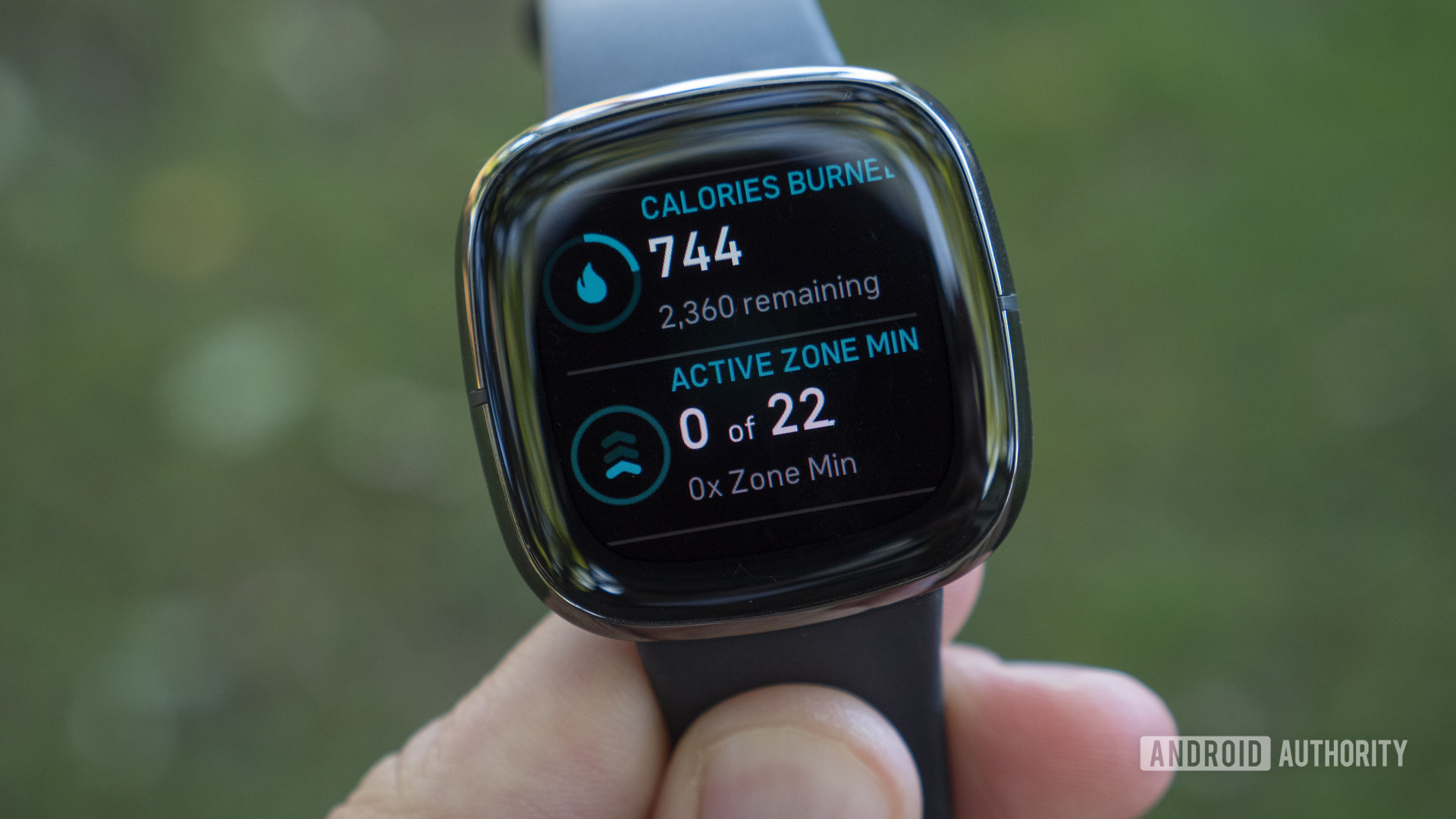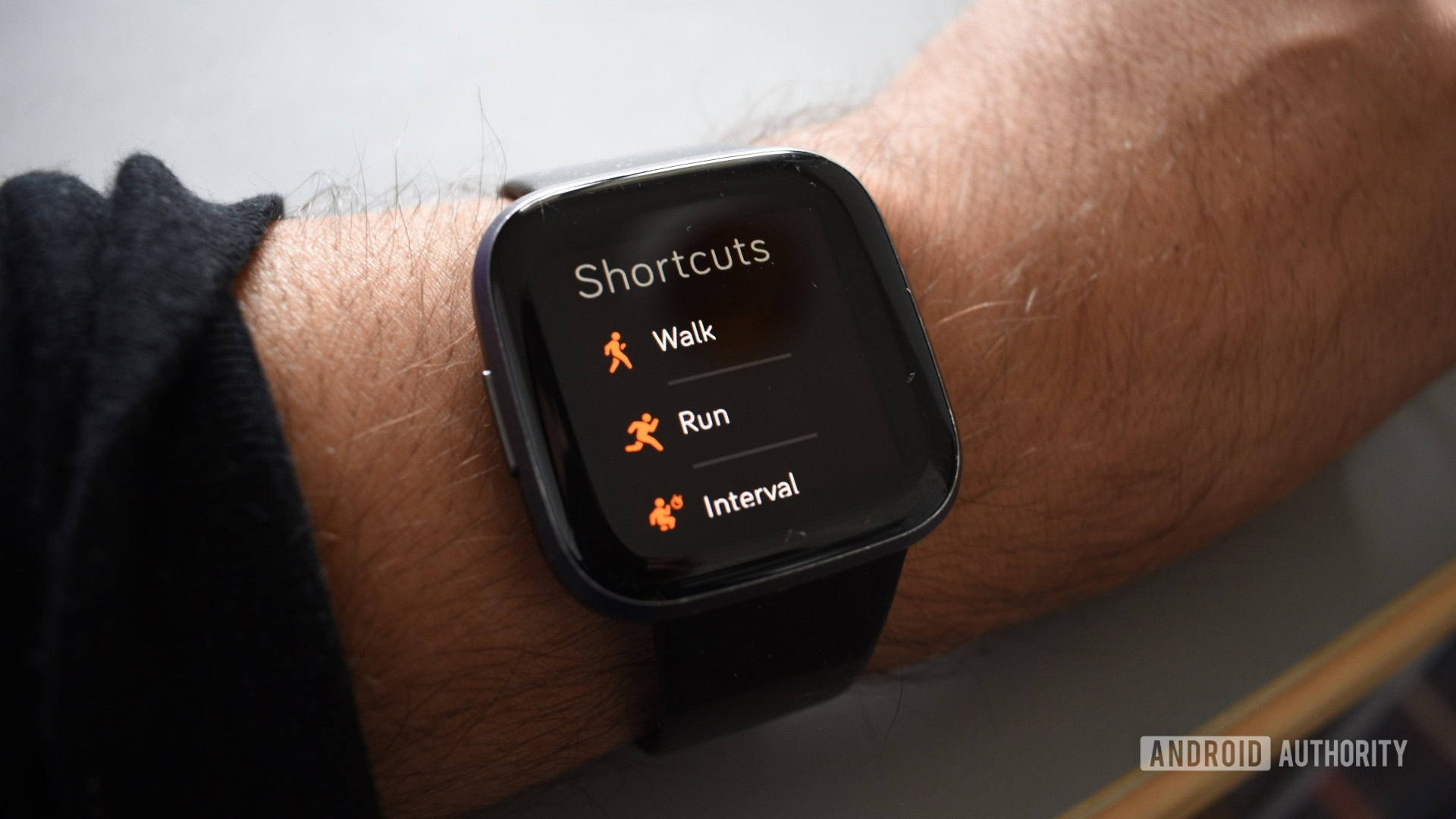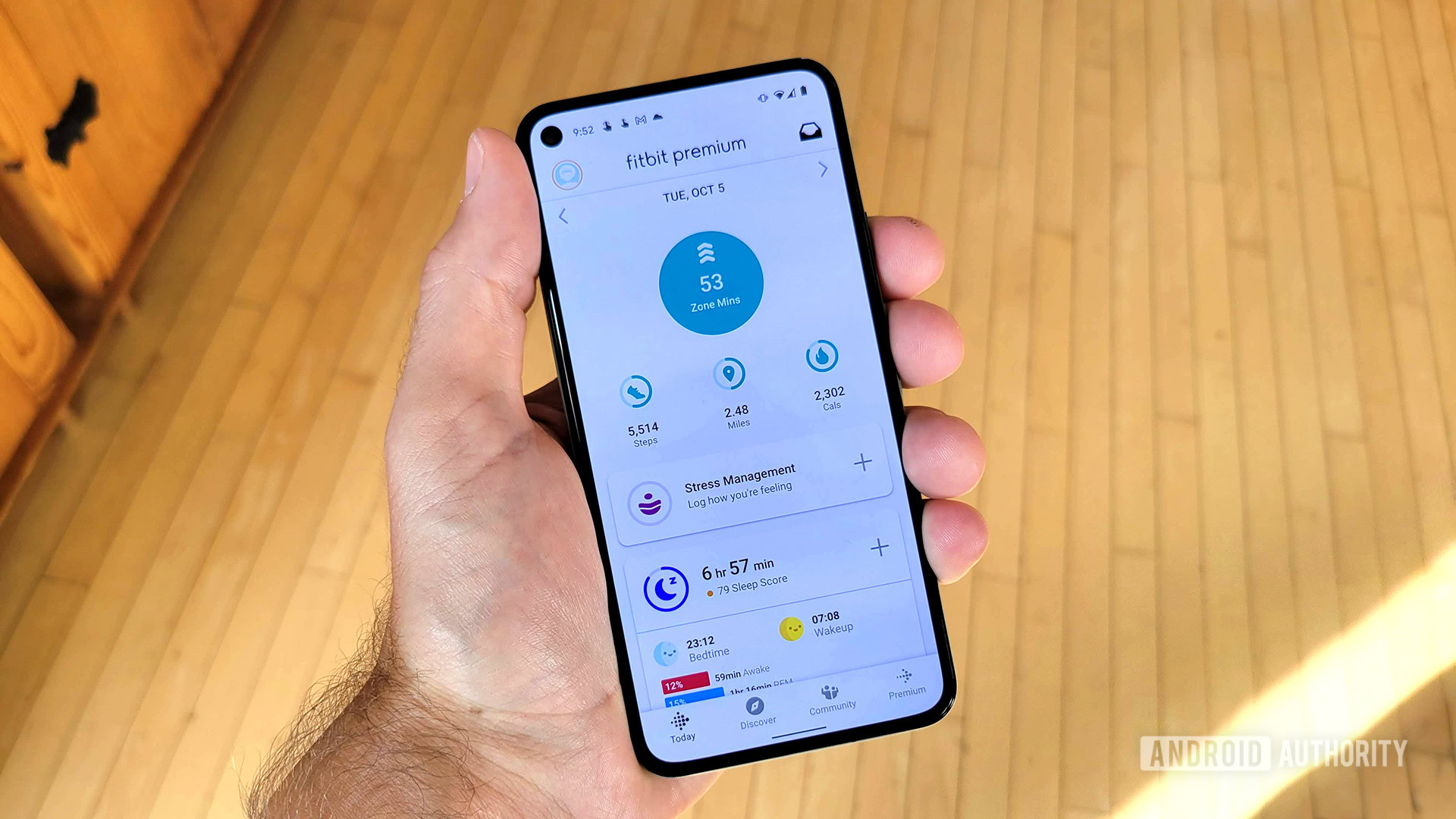Affiliate links on Android Authority may earn us a commission. Learn more.
Fitbit for weight loss: How to use your fitness tracker to lose weight
A Fitbit is the perfect companion for weight management. Not only is it useful for those who intend to gain mass, but it’s also great for those shedding a few pounds. If you purchased a Fitbit specifically for weight loss, and have no idea where to start your journey, don’t fret. Below, we detail a few tips and tricks that’ll help you in your Fitbit weight loss journey.
Should you buy a Fitbit for weight loss?

Any fitness tracker is great for adding context to your weight loss journey, but we like how easy Fitbit devices are to use. The Fitbit app is smartly laid-out and allows users to monitor calorie burn, calorie intake, set weight goals, and more.
If you’re wondering which Fitbit tracker to purchase for weight loss, there isn’t really a correct answer. Grab the Fitbit Sense if you want to monitor your heart health and stress figures, or purchase the Inspire 2 or Charge 4 if you’re seeking a no-nonsense, affordable pair of trackers.
See also: How much is a Fitbit?
Tips for losing weight using a Fitbit
Monitor your daily calorie burn
It’s essential to monitor calorie burn if you’re looking to lose weight with your Fitbit. The more you move, the more calories you’ll burn during the day.
On Fitbit devices, this score is tracked automatically and is displayed on your smartwatch and tracker, and within the app itself. Simply open your Fitbit app on your phone and tap the calorie (fire) icon on the Today tab’s header. This section provides an overview of your calorie burn as far back as a year.
You’ll need to strive for a calorie deficit lifestyle to lose weight. A calorie deficit occurs when you use more energy than you replace through food and drink. This allows your body to dip into its energy reserves.
There are two ways to achieve this. You can raise your body’s calorie requirements by exercising regularly or ensuring you remain more mindful of the food you consume. According to the Mayo Clinic, calories and caloric burn is the most important single facet when it comes to weight loss. Small changes, like switching out a flavored latte for black coffee, or a soda for sparkling water, can make a difference over time. Fitbit devices allow you to keep track and manage these changes.
Exercise more

It’s easier said than done, but luckily Fitbit devices prompt users to get active in several subtle and overt ways. For one, most trackers have Hourly Activity goals, which prompt users to take at least 250 steps per hour for a set number of hours throughout the day. You can find these stats by heading to your Fitbit app on your phone and tapping the Hourly Activity (maroon man with a broken circle) section on the Today tab.
Secondly, Fitbits also monitor more than 20 activities, so you’re covered if you’re into golf or yoga. This makes exercising a little more enjoyable for those who don’t always have the confidence or time to go to the gym. You can initiate a new exercise directly from your Fitbit smartwatch or tracker and view the results in the Exercise section of your app. You can find more specific details on how to start a workout for your tracker below.
Importantly, you should never expect to see results immediately. According to the CDC, healthy weight loss can be as modest as 5-10% of your total body weight, depending on your particular circumstances. But achieving this goal is a “journey rather than a final destination.” Start your exercise journey slowly, enjoy it, and worry about the benefits at a later date. The key is to establish exercise and motion as a facet of your daily life.
See also: How to start a workout on your Fitbit
Track your food intake
Although it’s not an exact science, the Fitbit app also lets you log food and drink, allowing you to calculate your calorie intake. The Food section on the Fitbit app’s Today tab packs a nifty graph that juxtaposes your calorie burn with your calorie intake. It also shows a breakdown of carbohydrates, protein, and fat from your meals.
Of course, weight gain might not be as simple as “energy intake exceeds energy expenditure.” According to a publication in the National Library of Medicine, there may be a more complex cocktail of genetics, behavioral, and environmental factors at play affecting your weight. So it’s not always as easy as “eat less, lose weight.” However, monitoring your food intake does give you some idea of how much energy you put into your body.
How to log food on Fitbit’s app
Open the Log Food page by tapping the + icon alongside the Food section on the Today tab. Here, you can add a new foodstuff from a list of frequent items. Of course, if this is your first time using the log food feature, you’ll need to add a foodstuff by using the barcode scanner or inputting details manually. You can also quickly log calories by tapping on the 123 icon at the top right of the screen.
It’s a bit of work, but logging calories will give you a great starting point to contrast your calorie requirements and your actual calorie intake.
Set, adjust, and review your goals

Goals are super important for losing weight, but more importantly, overall fitness. According to Penn Medicine, patients who set their own fitness goals and then reach for them immediately are more likely to maintain these positive regimes. This means adjusting your goals on your Fitbit should be a top priority.
Fitbit lets users set personal goals for weight, steps, distance traveled, calories burned, and Active Zone Minutes — time spent at higher heart rates.
Although the Fitbit app will set goals automatically, we recommend that you tweak these after using your Fitbit for a week. You might not walk 15,000 steps a day, so bringing that number down to something more reasonable and achievable is the target.
Edit Daily Activity Goals
You can edit your Daily Activity goals by tapping on the Steps icon on the Fitbit app’s Today tab, then tapping the gear icon at the top right of the screen. Here, you can adjust daily goals for:
- Steps
- Distance
- Calories
- Active Zone Minutes
- Floors
- Hourly Activity Goal
- Weekly Active Zone Minutes
Edit Weight Goals
To adjust weight goals, tap on the Weight section on the Fitbit app’s Today tab, then tap the gear icon in the top right of the screen. You can adjust specific goals, including:
- Your Goal (Lose or Gain weight)
- Goal Weight
- Start Date
- Starting Weight
- Body Fat %
Use Fitbit’s guided exercises and challenges
Open the Fitbit app, tap the Discover tab, and scroll down to Workouts. Tap See All. Here, you’ll find several free workouts that you can do at home, spanning five to 35 minutes. This is a great place to start if you want to start working out in the comfort of your own home.
Fitbit Premium
If you’ve already been through these exercises, consider purchasing a Fitbit Premium subscription. Granted, it’s pricey at $79 per year, but it offers additional programs that address muscle groups, focus on flexibility, and more. If you’ve purchased a Fitbit Sense, Charge 5, or Luxe, you have access to a six-month Fitbit Premium trial. The Inspire 2 comes with a year-long trial, too.
Fitbit challenges
Fitbit also encourages its users by offering several unlockable challenges. Tap the Discover tab once more but select See All in the Challenges & Adventures section. Here, you can compete with friends, participate in virtual races with other Fitbit users, or take these on yourself. This section of the Fitbit experience is among the most disappointing and lean, so here’s hoping that Fitbit adds additional challenges in the future.
Purchase a smart scale
Finally, one recommendation that makes plenty of sense for Fitbit users or otherwise is purchasing a smart scale. Fitbit offers the Aria Air, which syncs seamlessly with the Fitbit app. However, other products on the market calculate body fat, skeletal mass, and additional facets.
While a study published in the National Library of Medicine found that smart scales do have a degree of error. For fat mass, these errors varied between -2.2kg and -4.4kg, depending on the group tested. However, despite these inconsistencies, we believe smart scales are helpful for users to establish a baseline and monitor trends over time.
You can also use a traditional scale and log your data manually within the Fitbit app. Simply tap on the + icon in the Weight section on the Fitbit app’s Today tab. You can add the date, your weight, and body fat % here.
Do you have tips on maximizing your Fitbit or fitness tracker for weight loss? How is your fitness journey going? Let us know your experiences, your struggles, your success stories, and more in the comments below.